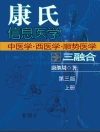Your ticket to acing Clinical Anatomy
Clinical anatomy is the study of human anatomy as it relates to clinical practice. Unlike a basic anatomy and physiology course designed to teach general anatomical knowledge, clinical anatomy focuses on specific structures and issues that people may encounter in a clinical setting.
Clinical Anatomy For Dummies presents a friendly, unintimidating overview of the material covered in a typical college-level Clinical Anatomy course. Clear definitions, concise explanations, and plenty of full-color illustrations make Clinical Anatomy For Dummies the most accessible book available to supplement your classroom texts.
- Plain-English explanations make difficult concepts easy to grasp
- Tracks to a typical college-level Clinical Anatomy course
- Features a 16-page color insert
Whether you’re a student or a practicing healthcare worker, Clinical Anatomy for Dummies makes this subject accessible and easy to grasp.
Содержание
Introduction 1
About This Book 1
Conventions Used in This Book 1
What You’re Not to Read 2
Foolish Assumptions 2
How This Book is Organized 2
Part I: Beginning with Clinical Anatomy Basics 3
Part II: Understanding the Thorax, Abdomen, and Pelvis 3
Part III: Looking at the Head, Neck, and Back 3
Part IV: Moving to the Upper and Lower Extremities 3
Part V: The Part of Tens 3
Icons Used in This Book 4
Where to Go from Here 4
Part I: Beginning with Clinical Anatomy Basics 5
Chapter 1: Entering the World of Clinical Anatomy 7
Studying the Body in Different Ways 7
Looking under the microscope or with your eyes 7
Speaking clinically: Terms used in clinical anatomy 8
Dividing the Body into Systems and Regions 8
Organizing the body by systems 9
Organizing the body by regions 10
Chapter 2: Getting a Grip on Terms Used in Clinical Anatomy 13
Describing Anatomy by Position, Region, and Plane 13
Beginning with the anatomical position 14
Figuring out what goes where in anatomical regions 14
Knowing what’s up, down, back, and front in specific terms 16
Slicing the body into anatomical planes 17
Labeling Anatomical Movement 19
Bending and straightening 19
Going away and getting closer 19
Moving in circles 20
Surveying other ways to move 20
Chapter 3: Examining the Integumentary, Musculoskeletal, and Nervous Systems 23
Showing Interest in Integument 23
Looking at the layers and structures of the skin 24
Going in farther to the fascia 26
Boning Up on the Skeleton 26
Figuring out what makes a bone 26
Surveying the shapes of bones 27
Feeling out bumps, ridges, and indentations 28
Catching Up to Cartilage 29
Joining the Joints 29
Making the Body Move with Muscles 31
Moving the bones with skeletal muscle 31
Keeping the heart ticking with cardiac muscle 33
Having no control over smooth muscle 34
Getting on Your Nerves 34
Determining what’s in (and on) a neuron 35
Coordinating input and signals with the central nervous system 36
Touching and moving with the peripheral nervous system 36
Feeling and reacting with the somatic nervous system 37
Taking control with the autonomic nervous system 37
Chapter 4: Moving Along with the Cardiovascular and Respiratory Systems 39
Tracing Circulatory Pathways in the Cardiovascular System 39
Making the rounds: Systemic circulation 40
Fueling up: Pulmonary circulation 41
Moving Blood Away from the Heart with Arteries 43
Looking inside large elastic arteries 44
Moving to medium muscular arteries 44
Surveying small arteries and arterioles 44
Taking Blood Back to the Heart with Capillaries and Veins 45
Exchanging gases, nutrients, and wastes in capillaries 45
Peeking into veins and venules 46
Breathing In and Out: The Respiratory System 47
Chapter 5: Looking at the Immune and Lymphatic Systems 49
Beginning with Red Bone Marrow and Leukocytes 49
Fighting infection with lymphocytes 50
Binging on bacteria with phagocytes 50
Controlling histamines with basophils 51
Surveying the Lymphatic System 51
Networking with lymphatic capillaries and vessels 51
Filtering lymph through nodes 52
Collecting lymph in ducts 53
Assessing Additional Lymphoid Organs 54
The thymus 54
The spleen 55
The tonsils, the appendix, and the gut 55
Chapter 6: Delving into the Digestive, Urinary, and Endocrine Systems 57
Breaking Down and Absorbing Your Food: The Digestive System 57
Starting in the mouth 58
Continuing through the esophagus and into the stomach 58
Finishing in the small intestine with help from the pancreas, gallbladder, and liver 59
Forming and removing bulk in the large intestine 59
Removing Wastes: The Urinary System 60
Handling Hormones: The Endocrine System 61
The master gland: The pituitary 61
The pituitary’s assistants: The hypothalamus and pineal glands 62
The body’s metabolism booster: The thyroid gland 62
Fighting infection: The thymus 63
Stressing out: The suprarenals 64
Digestive aid: The pancreas 64
Mars and Venus: The testes and the ovaries 65
Part II: Understanding the Thorax, Abdomen, and Pelvis 67
Chapter 7: Checking Out the Thoracic Cage and Coverings 69
Getting Under Your Skin: Thoracic Bones, Joints, Muscles, and More 69
Forming the thoracic cage: The bones 70
Moving just a little: The joints 72
Helping you breathe: The respiratory muscles 73
Running through the thorax: The nerves and blood vessels 76
Covering It All Up: The Surface Anatomy of the Thorax 78
Using imaginary lines in your assessment 78
Looking at the anterior chest wall 79
Examining the posterior chest wall 82
Chapter 8: Assessing the Thoracic Organs 85
Understanding the Mediastinum and Pleural Cavities 85
The mediastinum 85
The pleural cavities 86
Looking at the Lungs 87
Surveying the lungs’ surfaces and borders 88
Getting air in and out with the trachea 88
Branching into the bronchi 88
Checking out the lobes 89
Flowing with nerves, blood vessels, and lymphatics 90
Having a Heart 93
Surrounding the heart with the pericardium 93
Examining the surfaces of the heart 93
Putting together the four chambers 95
Feeding the heart: Arteries and veins 97
Giving the heart its spark 98
Exploring Thoracic Circulation 101
Circulating blood in the major vessels 101
Moving lymph through the lymphatic vessels 102
Discovering What Else is in the Thoracic Cavity 103
Chapter 9: Bellying Up to the Abdominal Wall 105
Drawing Quadrants and Regions on the Abdominal Wall 105
Using two lines: The four quadrants 106
Using four lines: The nine regions 106
Making Up the Abdominal Wall: Muscles and More 107
Absolutely fabulous abdominal muscles 107
Nerves, blood vessels, and lymphatics for maintaining tissues 108
Lining the abdomen: The peritoneum 112
Inspecting the Inguinal Region 112
The inguinal ligament and the iliopubic tract 112
The inguinal canal 113
The spermatic cord 114
The testes 114
The scrotum 115
Seeing the Skin and Surface Anatomy of the Abdominal Wall 116
Chapter 10: Probing the Abdominal Organs 119
Poking Around the Peritoneum 119
The mesentery and the peritoneal folds and ligaments 120
The greater and lesser omentums 120
Digging into the Main Digestive Organs 121
Entering the esophagus 121
Churning in the stomach 122
Winding through the small intestine 124
Moving into the large intestine 126
Observing Organs that Assist with Digestion 128
Locating the liver 128
Glancing at the gallbladder 132
Pinpointing the pancreas 132
Identifying Renal Anatomy 133
Knowing the kidneys 134
Tracing the ureters 135
Spying the suprarenal glands 135
Figuring Out What Else is in the Abdominal Cavity 136
The spleen 136
Nerves 137
Major abdominal blood vessels 139
Lymphatics 142
Chapter 11: Seeing the Pelvis and the Perineum 145
Pinpointing the Pelvic Structures 145
Forming the pelvic girdle: Bones and joints 146
Making note of muscles and fascia 148
Personal space: The peritoneum 149
Feeling out the nerves of the pelvis 150
Viewing blood vessels 152
Looking at lymphatics 154
Comparing Pelvic Organs 155
Locating pelvic organs that everyone has 155
Finding Mars: The male pelvic organs 157
Finding Venus: The female pelvic organs 159
Exit Strategy: The Perineum 162
The male perineum 164
The female perineum 164
Part III: Looking at the Head, Neck, and Back 167
Chapter 12: Head of the Class 169
Sticking to the Skull Bones 169
Cradling the brain in the cranial cavity 170
Facing forward with the facial bones 172
Encasing the Brain: The Meninges 173
The dural infoldings 173
The dural venous sinuses 174
Locating the Areas and Structures of the Brain 175
Thinking about the cerebrum 177
Going inside the diencephalon 177
Balancing the cerebellum 177
Surveying the brainstem 178
Draining the brain with the ventricles 178
Getting the glands 178
Counting the cranial nerves 179
Serving the brain: The blood supply 182
Putting on a Face 183
Expressing yourself with facial muscles 183
Moving with motor nerves 185
Feeling out sensory nerves 185
Viewing blood vessels 187
Getting a handle on lymphatics 190
Enveloping the Head: Facial Surface Anatomy and the Scalp 190
Chapter 13: Seeing, Smelling, Tasting, and Hearing 193
Seeing into the Eyes 193
Taking cover with eyelids 194
Having a ball — an eyeball, that is 195
Rolling your eyes with extraocular muscles 197
Serving the eyes: The nerves 199
Providing blood flow to and from the eyes 200
Knowing the Nose 201
Sniffing out the exterior of the nose 201
Scoping out the nasal cavity 201
Insinuating your way into the paranasal sinuses 203
Sensing the nerves, blood vessels, and lymphatics 204
Investigating the Mouth 204
Open wide: The oral cavity 204
Chew on this: The teeth and gums 205
Picking on the palate 205
Sticking out your tongue 207
Making spit in the salivary glands 209
Tapping into the temporomandibular joint 209
Noting nerves 211
Viewing blood vessels 212
Sorting through lymphatics 212
Entering the Ear 213
Examining the external ear 213
Moving into the middle ear 214
Diving deeper into the inner ear 216
Keeping an ear out for nerves and vessels 217
Chapter 14: It’s Neck and Neck 219
Sizing Up the Superficial Structures: Muscles, Nerves, and Blood Vessels 219
Dividing the triangles: The sternocleidomastoid 220
Going back to the posterior triangle of the neck 221
Understanding the anterior triangle of the neck 223
Neck Deep: Diving into the Deep Structures 226
Flexing the neck: The prevertebral muscles 226
Rooting around the root of the neck 228
Homing In on the Neck Organs 230
Front and center: Thyroid and parathyroid glands 230
Speaking of the pharynx, larynx, and trachea 231
Locating lymphatic vessels and nodes 236
Surrounding the Neck: Skin and Surface Anatomy 237
Chapter 15: Back to Back 239
Stacking Up the Vertebral Column 239
Analyzing a typical vertebra 240
Putting the vertebrae into groups 241
Connecting with the vertebral joints 244
Studying the Spinal Cord and Meninges 246
Spying on the spinal cord and nerves 246
Coverings and cushions: Understanding the meninges and cerebrospinal fluid 247
Flexing Your Back Muscles 249
Shouldering the load: The extrinsic muscles 249
Twisting and turning: The intrinsic muscles 249
Nodding your head: The suboccipital muscles 252
Providing Blood Flow and Lymphatic Drainage in the Back 254
Assessing the Surface Anatomy of the Vertebrae and Back Muscles 254
Looking for curves in the spine 255
Seeing bones on the back’s surface 255
Viewing the back muscles 256
Part IV: Moving to the Upper and Lower Extremities 257
Chapter 16: Shouldering the Load: The Pectoral Girdle and the Arm 259
Boning Up on the Shoulder and the Arm 259
Looking at the bones of the pectoral girdle 260
It’s not funny, but it’s humerus 261
Joining the Parts 262
Collaring the sternoclavicular joint 262
Reviewing the acromioclavicular joint 262
Hanging on to the humerus 263
Sniffing around the Axilla (Armpit) 264
Forming the apex, the base, and the walls 264
Tracking the axillary artery and vein 265
Moving the Shoulder and the Arm 265
Taking a look at the anterior muscles 265
Moving to the posterior muscles 267
Shaping up the shoulder muscles 267
Maintaining the Tissues 269
Acknowledging the nerves and blood supply 269
Remembering the lymphatic vessels 273
Covering Your Shoulders and Arms: The Surface Anatomy 274
Chapter 17: Bending the Elbow and Focusing on the Forearm 277
Forming the Elbow and the Forearm: The Bones 277
Handling the humerus 277
Regarding the radius 278
Understanding the ulna 278
Joining the Elbow and the Forearm 279
Bending the elbow 279
Reviewing the radioulnar joints 279
Making the Elbow and Forearm Move: The Muscles 280
The muscles of the arm 280
The muscles of the forearm 282
Giving a Nod to the Nerves and Blood Supply 282
Nerves 284
Blood supply 284
Looking Only Skin Deep: The Surface Anatomy 285
Chapter 18: Shaking Hands and Grabbing the Wrist 287
Putting Your Hands (and Wrists) Together 287
Starting with the carpal bones 288
Moving to the metacarpal bones 289
Finding the phalanges 290
Waving and Wiggling with the Help of Joints 290
Looking at the wrist joints 290
Handing over the hand joints 291
Pointing to the finger joints 291
Making the Most of Wrist and Hand Muscles 292
Flexing and extending the wrist 292
Sticking out your thumb with the thenar muscles 296
Honing in on the hypothenar muscles 296
Investigating the interosseous muscles and the lumbricals 297
Knowing the Nerves and Blood Supply of the Wrist and Hand 297
Getting a feeling for the nerves 298
Uncovering the arteries and veins 299
Fitting Like a Glove: The Surface Anatomy of the Wrist and Hand 300
Chapter 19: Getting Hip to the Hip and the Thigh 303
Honing In on Hip and Thigh Bones 303
Understanding the Hip and Thigh Joints 306
Seeking the sacroiliac joint 306
Surveying the symphysis pubis 307
Looking at the acetabulofemoral joint 307
Swaying Your Hips and Moving Your Thighs with the Help of Muscles 308
Minding the muscles of the buttocks 308
Turning with the thigh muscles 310
Maintaining the Hip and Thigh Tissues 312
Knowing the nerves 313
Flowing through the arteries and veins 315
Looking at the lymphatics 316
Summing Up the Surface Landmarks 317
Chapter 20: Knowing the Knee and the Leg 319
Logging the Knee and Leg Bones 319
Knocking the Knee Joint 322
Coming up with cartilage and the joint capsule 322
Balancing the menisci 322
Hanging on with the ligaments 324
Bumping up against the bursae 325
Kneeling on the patellofemoral joint 326
Supervising the superior tibiofibular joint 326
Mastering the Muscles that Affect the Knee and Leg 326
Starting with thigh muscles that work with the knee 327
Aiming at the anterior compartment 327
Looking at the lateral compartment 328
Pondering the posterior compartment 328
Noticing the Nerves, Blood Vessels, and Lymphatics of the Knee and Leg 329
Noting the nerves 329
Analyzing the arteries and veins 331
Listing the lymph nodes 332
Summing Up the Surface Landmarks 332
Chapter 21: Finding the Ankle and the Foot 335
Looking at the Framework of the Ankle and Foot 335
Aiming for the ankle bones 336
Assessing the architecture of the foot bones 336
Taking In the Ankle and Foot Joints 337
Moving up and down: The ankle joint 337
Supporting your weight: The foot and toe joints 338
Bending Your Ankle and Curling Your Toes: The Muscles 341
Turning to leg muscles that move the ankle and the foot 341
Minding the muscles of the foot 343
Getting Maintenance with Nerves, Blood Vessels, and Lymphatics 344
Naming the nerves 345
Looking at blood vessels and lymphatics 346
Summing Up the Surface Landmarks of the Ankle and the Foot 347
Part V: The Part of Tens 349
Chapter 22: Ten Helpful Clinical Anatomy Mnemonics 351
Thinking about the Cranial Bones 351
Focusing on the Facial Bones 352
Memorizing the Cranial Nerves 352
Summing Up the Heart-Valve Sequence 353
Ordering the Abdominal Muscles 353
Tracking the Intestinal Tract 354
Remembering the Rotator Cuff Muscles 354
Concentrating on the Carpal Bones 354
Looking at the Lateral Rotator Muscles of the Hip 355
Taming the Tarsal Bones 355
Chapter 23: Ten Ways to Look into the Body without Cutting It Open 357
Conventional Radiography 357
Computerized Tomography 358
Magnetic Resonance Imaging 358
Positron Emission Tomography 358
Fluoroscopy 359
Mammography 359
Ultrasonography 359
Opthalmoscopy 360
Upper Endoscopy 360
Colonoscopy 360
Index 361
Об авторе
David Terfera, Ph D, teaches biomedical sciences at the University of Bridgeport College of Naturopathic Medicine. Shereen Jegtvig, DC, MS, is a health and nutrition writer.












